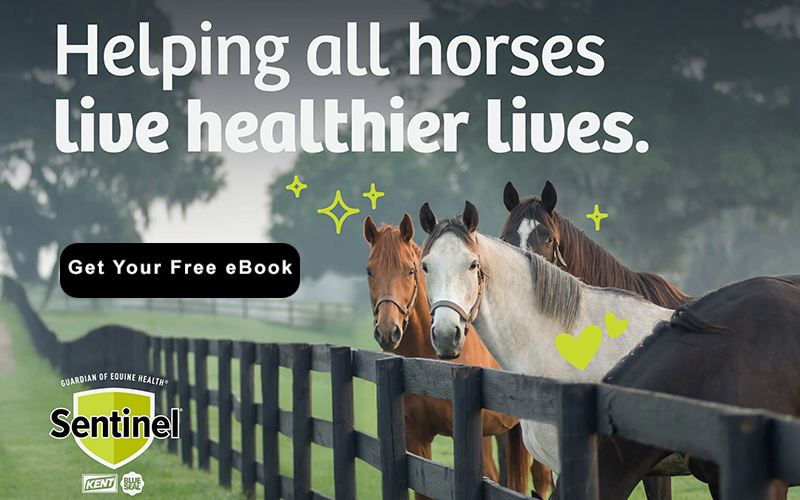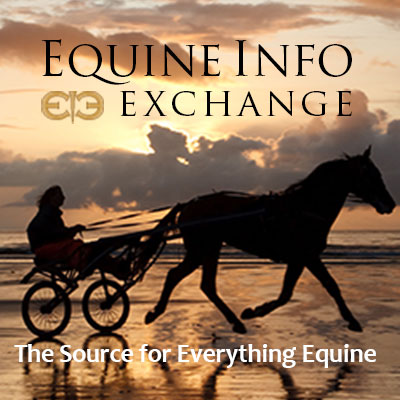Health & Education
We all want the best care possible for our horses. The Heath & Education section covers both Learning Institutions, Organizations as well as many sources for equine assistance including Veterinarians and Farriers.
For those who want a to formally study horses, the Education section includes College Riding, Equine Studies, and Veterinary Schools. Learn about the wide variety of horses in the Horse Breeds section. Supplements and Treatments Therapy are also included in the section.
Everyone can learn from Fine Art and there are some specialty Museums that might surprise you.
Horses as a therapy partner enrich the lives of the disabled. These facilities are listed in our Therapeutic Riding section. To help children and young adults build confidence and grow emotionally, please see the resources available on the Youth Outreach page.
Looking for a place to keep your horse? You can find it in the Horse Boarding section. Traveling? Find a Shipping company or Horse Sitting service if your horse is staying home!
Want to stay up to date with the latest training clinics or professional conferences? Take a look at our Calendar of Events for Health & Education for the dates and locations of upcoming events.
Do we need to add more? Please use the useful feedback link and let us know!
Equine Affaire exclusive clinic with world renowned Monty Roberts performing Join-Up with a wild horse.
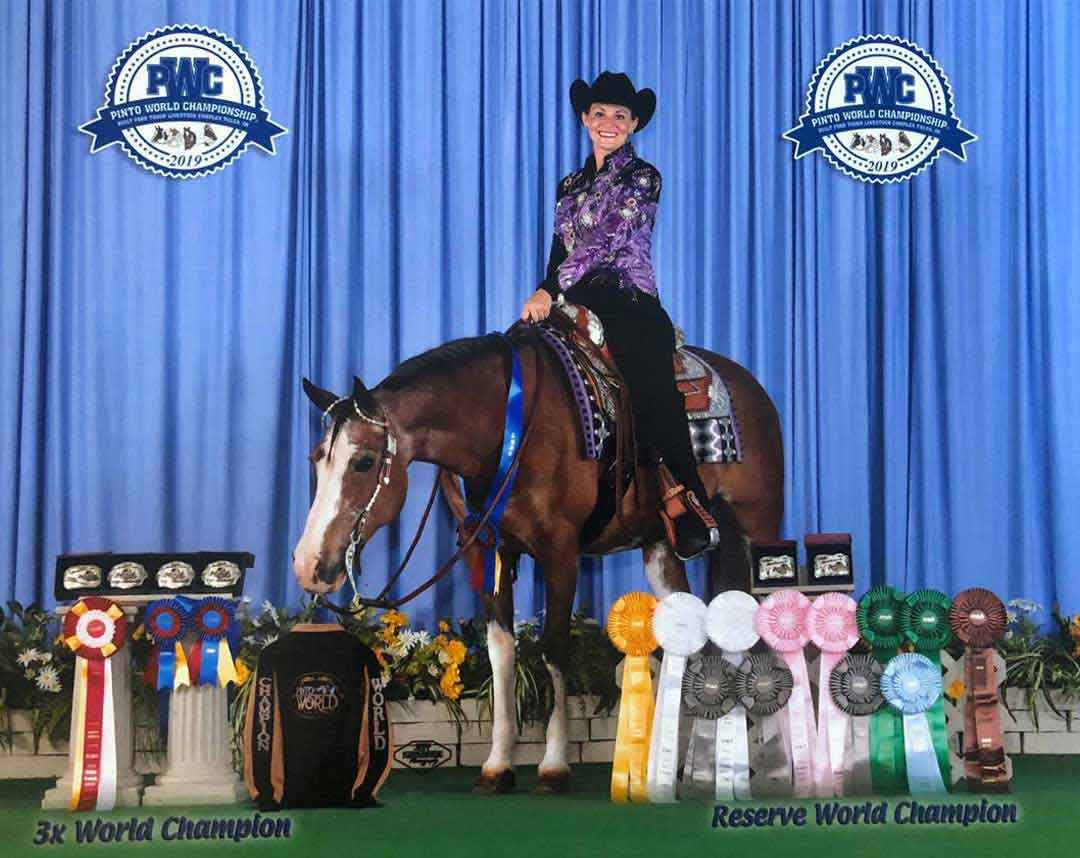
Equine wellness couldn't be more important to Kelly Mancinelli, DVM, who has enjoyed nearly 25 years of riding and competing with her childhood Pinto mare, Singin' Saddie Sue.
Horse and World Champion
"I remember the day I was supposed to sit on Saddie for the first time. I was actually sick with the flu, but I didn't care. I went out and did my lesson because I was so excited to ride her," Dr. Kelly Mancinelli said.
Fast forward to 2019, and Singin' Saddie Sue is 25 years old. Kelly is still in the saddle, and the two continue to compete across the country. Of many accolades, Saddie is an eight-time 4H champion, 11-time Congress Champion and eight-time World Champion. Together, they have won several show high-point championships, as well as 200 belt buckles, 150 trophies and six show saddles.
Saddie is the perfect example that when it comes to "senior" performance horses, age is just a number when horse health is prioritized. While there are special considerations for senior horses, risks such as age-related diseases can be managed through preventative care and trusted medications.
Read more: Veterinarian, Equestrian Advises on Caring for the Senior Show Horse
In this episode of StallSide, our host, Dr. Peter Morresey, interviews dermatologist Dr. Julia Miller, who specializes in diagnosing and treating skin conditions. Dr. Miller sheds light on two common issues that horse owners may face: scratches and hives.
Scratches are a skin condition usually affecting horses’ lower legs but can be present in other areas of the body. Dr. Miller explains the causes of scratches using the three P’s- predisposing, primary, and perpetuating factors. She also discusses the benefit of tissue biopsies and prevention and treatment options, such as topical ointments and antibiotics.
Hives, on the other hand, are allergic reactions that can occur in horses due to various triggers, including Food, insect bites, and medications. Dr. Miller explains the symptoms of hives, which include raised bumps on the skin and itching and emphasizes the importance of identifying and removing the trigger. She also discusses when to call your veterinarian and treatment options, such as antihistamines and corticosteroids.
Read more: Rood & Riddle "Stallside" Podcast - Scratches and Hives Oh My! with Dr Julia Miller
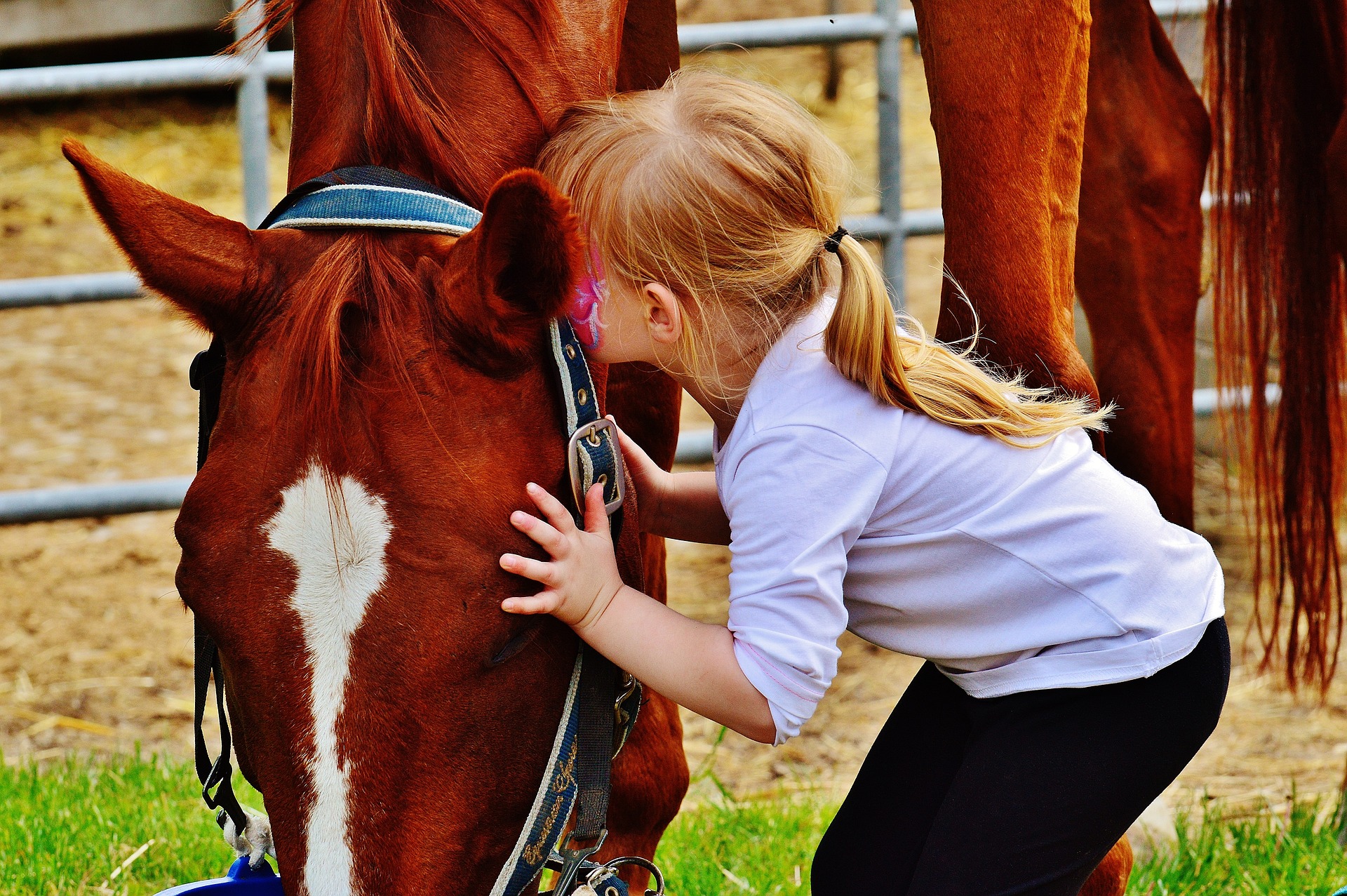
by Cynthia Sutton for Equine Info Exchange
I remember learning to ride when I was seven years old when my mom bought me a book of lessons for Christmas. I was thrilled. I smile at the memory when I watch the video of me screaming with delight so many years ago. It was the start to a lifelong journey of riding horses and meeting the amazing people along the way who remain my friends to this day.
So, what do you do when your child shares your passion and wants to ride a horse?
Here are some ways to get the ball rolling:
- Check out the Pony Club in the United States to see what they have to offer. Others include Pony Club UK, Canadian Pony Club and Pony Club Australia.
- Join local groups on Facebook and ask for recommendations.
- Find a place to go trail riding where a beginner can experience a safe and leisurely ride.
- Seek out a summer camp where your child can learn to care for and ride a horse.
- See if a friend has a horse and schedule a visit with your child. It may at least give him or her a chance to groom!
- List a request on the website Nextdoor for recommendations in your area.
- See if there is a College or Preparatory school with a riding stable to see if your child can get involved.
- Go to the local feed store like Tractor Supply and see if they have a bulletin board.
- Go to the local tack store and see if they have bulletin board as well!
- Ask your friends for suggestions on places to go!
If you are interested in lessons, you may be looking for a barn. Finding a barn for a child is different than finding a barn for adults. It is highly recommended to check out possible barns before you bring your child with you.
Look for these things:
- Is it priced within your budget? You don’t want your child to fall in love with a stunning barn only to learn it is unaffordable.
- Is it clean? A well maintained barn is always important and sets a good example for your child.
- Check the tack room. Is there a place for you if you bring in your tack or is it messy and overcrowded?
- Are there lots of kids running around? It is important to ensure that the kids in the barn are properly supervised.
- Look at the refrigerator if there is one. Is it full of wine and beer or drinks appropriate for children? 6
- Are the horses receiving proper care? Bad horse care is a huge indicator of bad management, issues with funds or uneducated owners.
- Are the instructors kind? We have seen many coaches and trainers in all sports who have an intensity of training future Olympians. Chances are, you are just seeking fun for your child – not a soul crushing experience.
- Is it conveniently located? Your child may fall in love with riding and may want to go as often as possible. Make sure it’s convenient especially if you are in the winter months and live in a place which snows!
- Is it recommended by people you trust? Word of mouth is extremely helpful and can give you the “inside scoop” about barns you may be considering.
- Is there a work to ride program? Some places offer an exchange program where a child can help around the barn to get discounted rides or lessons. We know lots of (now) adults who did that as kids and helped provide a foundation in work ethics.
Other great resources to see shows and figure out a discipline to pursue are the United States Equestrian Federation and the Fédération Equestre Internationale (FEI).
Have fun, be safe and remember – always wear a helmet!
There are other interesting articles in our section on Health & Education.
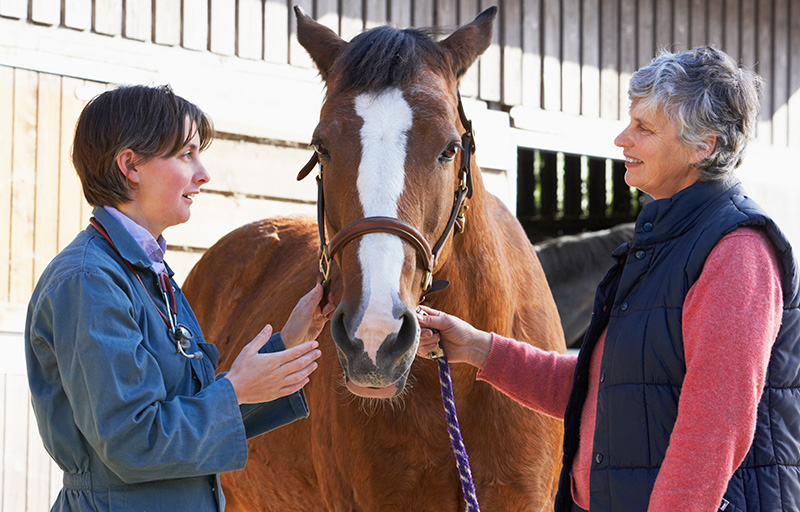

Signage is a good start for making farm visitors aware of biosecurity protocol but a point person and educated staff, owners, clients and service providers are all part of the equation to help reduce the risk of introducing or spreading disease on your property.
Ensuring everyone understands their respective biosecurity roles begins with having Standard Operating Procedures (SOPs) in place.
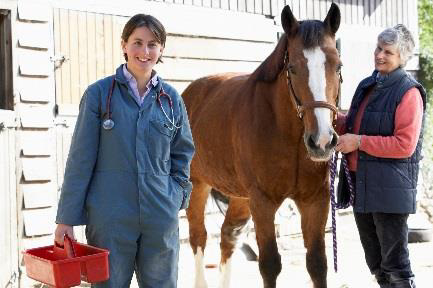
Work with your veterinarian when reviewing your Standard Operating Procedures (SOP) and when developing new ones to target relevant risks. The designated person can then ensure all staff are trained annually and whenever there is a change in process. Maintaining a record of staff training helps to ensure the necessary protocols and risks are addressed. A copy of the farm or facility’s biosecurity protocol should be kept accessible to all potential users. A contact list should be kept of owners, custodians, clients, and service providers including facility workers, veterinarians and so on, in order to distribute and communicate biosecurity information.
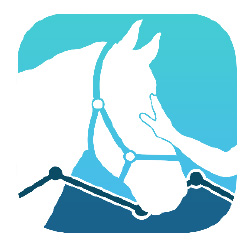
Regularly monitor horse health. Train all staff and volunteers to understand and conduct a Horse Health Check Assessment and record the results in the log book along with any concerns and follow-up. Recognizing the signs of illness early and taking immediate action is a crucial step in reducing the risk of spreading disease. Equine Guelph’s Horse Health Tracker App is a very useful guide for this assessment. Protocols for managing the sick horse and other horses are important to have in place. Ensure that everyone understands the protocols. Horse owners, custodians, and farm and facility mangers must discuss these issues to ensure horse health and welfare is maintained.
This is a sample Intro to Lope lesson for horseback riding students demonstrating the 15 minute lesson format used by participants during a Certified Horsemanship Association (CHA) riding instructor certification. Visit CHA.horse to find a certification near you.
Read more: Sample Lesson: First Lope with Tara Reimer (17:12)
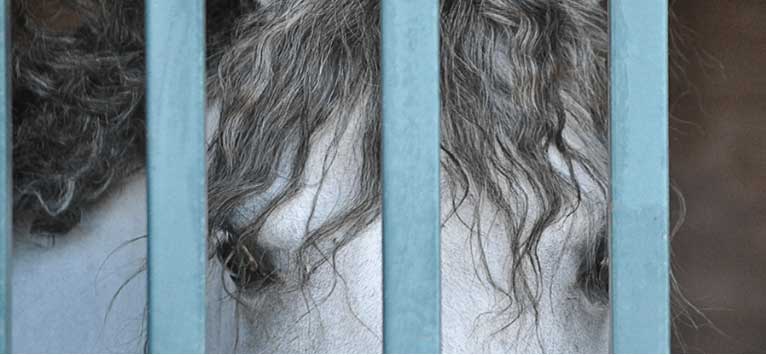
Despite veterinary experts inundating horse owners with information on the link between obesity, equine metabolic syndrome, and laminitis, overconditioning and subsequent obesity are prominent welfare issues. An estimated 50% of horses are classified as overweight, with up to 30% of those considered obese. This problem, however, is not restricted to sedentary horses but is widespread, even among elite performance horses.
In a recent study, nutritionists at North Carolina State University evaluated the body condition scores (BCS) of 377 elite ponies competing at a national hunter competition.* The same two evaluators also assigned a cresty neck score (CNS) to the same ponies.
“The standard nine-point Henneke BCS scale was used, where a BCS of 5 was considered ideal and a BCS greater than 6 was considered overweight. For the five-point CNS, a ‘cresty neck’ was defined as a score of more than 2.5,” explained Ashley Fowler, Ph.D., a nutritionist for Kentucky Equine Research.
“A cresty neck is characterized by fat accumulation along the top of the neck. Studies have found that a cresty neck increases the risk for metabolic issues, such as insulin resistance. Some horses may have a cresty neck without being considered fat or extremely fat (BCS higher than 7), so measuring both BCS and CNS is important,” explained Fowler.
The average BCS of the ponies was 6.7, which is considered overweight. No pony was designated as thin as all ponies had a BCS of more than 5. The average CNS was 2.8, meaning, as a group, the ponies did have cresty necks.
“In total, 93% of the ponies were overweight, with 35.5% of those having a BCS greater than 7,” summarized Fowler.
According to the nutritionists conducting the study, “This is of concern considering the vast amount of evidence to suggest that overweight equids are at a higher risk of disease. Animals with a body condition score of 7 or higher and/or regional adiposity (such as a cresty neck) have a 3-5 times higher risk of developing laminitis.”
Potential reasons explaining the tendency towards obesity include the following:
- Impression by owners that overconditioned animals perform better than underconditioned animals;
- Peer pressure from other owners can affect how individuals approach their own horse’s adiposity and weight-loss efforts;
- Owners are not skilled at evaluating BCS, with studies showing they often do not recognize their horse is overweight or obese; and
- Studies show that even judges “prefer” overweight horses to lean (but not thin) ones.
Read more: Obese Equine Athletes: Are These “Unhealthy” Healthy Horses?
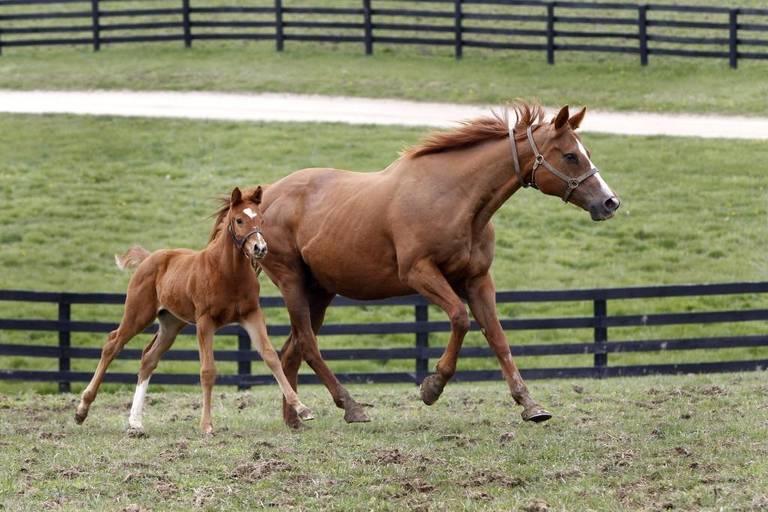
Whether you are building from scratch or renovating, keeping biosecurity in mind can help reduce the risk of introducing or spreading disease on your property.
When building:
- Select smooth, non-porous, durable materials as they are easy to clean and disinfect; there are a wide variety of materials to choose from depending on the intended use (e.g. metal, vinyl coated metal, polymer coated wood, sealed concrete and some plastics).
- Seal wooden surfaces with non-toxic marine grade enamel paint or urethane, again for easy cleaning and disinfecting. Avoid sealing surfaces that horses may chew on.
- Choose building materials that will not shatter or splinter if a horse kicks them and will not degrade on continued exposure to sunlight, water, and products used for cleaning and disinfecting.
- Plan for a sufficient number of taps and sinks for cleaning and hand washing and ensure adequate subsurface drainage to remove waste water and storm water.
- Always check with the product manufacturer that paints, sealers, cleaners and disinfectants are approved for use in livestock buildings.
Before you build or renovate consider:
- Geography: areas less densely populated with horses and livestock can reduce risk of exposure to pathogens.
- Topography: Slope of land and type of soil affects drainage, pasture quality, footing for horses and ease of building. Trees and hills can provide protection from the sun and influence wind patterns and ventilation. Ponds and streams can be an attractant for wildlife, pests and affect drainage.
- Layout: Plan for the number of horses to be housed and potential expansion. Consider separating horses that are at higher risk of disease exposure (such as horses that are frequently travelling to other farms or facilities) from horses at lower risk (those that rarely leave the property). Minimize the chance of contamination of feed, water and clean bedding from manure and wash water.
- Traffic Flow: Reduce the risk of spreading pathogens by controlling the movement of people, horses, equipment and material on the farm or facility. Also, review section six and seven on movement of horses and access management in the National Farm and Facility Level Biosecurity Standard for the Equine Sector.
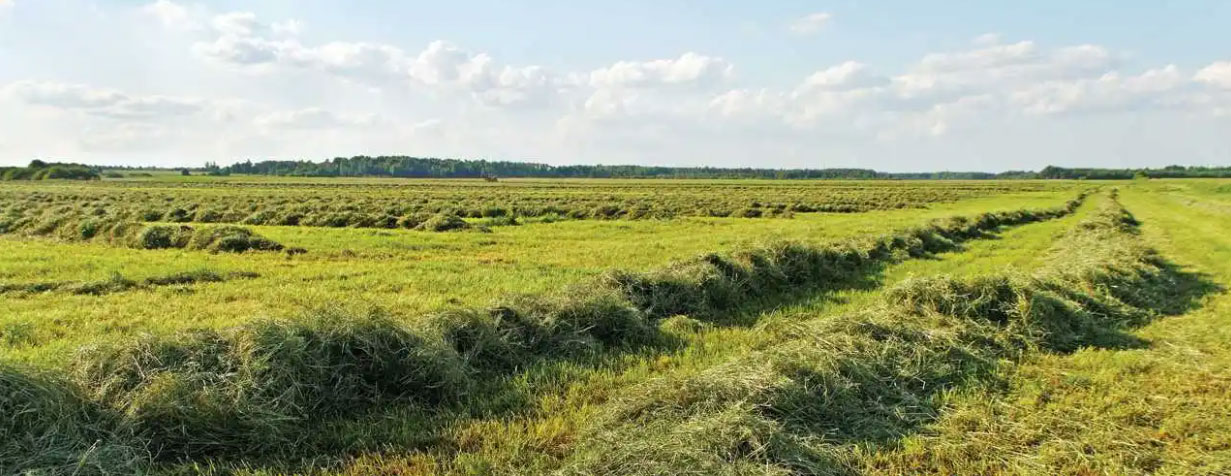
by Eleanor Kellon, VMD
Both owners and professionals seem to fall into two groups, those who espouse forage only (hay, pasture) and those who focus on the commercial grain they feed. Both are wrong.
FOUNDATION OF EVERY HORSE'S DIET
It's true that the foundation of every horse's diet should be forage. The more work the horse does, the more calories they need and horses doing very physically demanding work often cannot get all the carbohydrates they need to maintain muscle glucose stores (glycogen) with forage alone. That is where concentrated carbohydrate sources come in. However, no horse needs grain for anything else.
WHAT IS HAY
Hay is simply dried grass. It has lower calories and lower carbohydrates than live grass because it continues to metabolize those until water reaches a critical low level and stops enzyme activity.
HAY'S PROTEIN
Hay is the horse's major source of protein. Good quality grass hay contains 8 to 12% protein yielding 362 to 545 grams of protein in 10 pounds. In contrast, 5 lbs of a 10% protein grain has 227 grams. Forage is the major source of protein.
HAY'S VITAMINS
When hay is cured, it rapidly loses vitamins C, E and, over time, the vitamin A precursor carotene. However, it is an excellent source of vitamin D and all the B vitamins are preserved in their biologically activated form.
HAY'S FAT
There is no dietary requirement for fat other than the essential fatty acids which the body cannot manufacture. This hasn't been studied in horses but in other species, alpha-linoleic and linolenic acid, omega-6, and omega-3. Live grass is a rich supply of both but cured hay loses its omega-3 and this needs to be replaced with flax or Chia seed. Grains and all the common vegetable oils are low in omega-3 and high in omega-6.
HAY'S ESSENTIAL MINERALS
Hay or grass contains all the nutritionally essential minerals, although not necessarily in the correct minimum amounts or ratios. Grains are not inherently balanced either but manufacturers can add what is needed to help meet minimum levels. What they cannot do is correct imbalances in the hay and for most horses that leaves the bulk of the diet unbalanced.
HAY ANALYSIS
Hay analysis is the ideal way to find out what needs to be added to the diet to balance hay. You can also reach out to your local agricultural extension agent or the state agriculture department to get average figures for where the hay was grown.
CONCLUSION
If horses were still roaming over hundreds of miles eating a wide variety of vegetation we wouldn't have to consider the imbalances created by the exact same diet for months or even years. It takes a little effort to get the diet maximized but well worth the effort.
This article originally appeared on Uckele Nutrition and is published here with permission.
There are lots of good articles in our section on Health & Education.
- Reading Horse Behavior with Dale Rudin (7:55)
- Why Do Horse Breeders Terminate a Twin?
- Rood & Riddle Stallside Podcast: The Importance of Ultrasound with Dr Colton Thacker (26:33)
- Infection Disease Control tips for Horse Farms - Dr. Scott Weese (15:62)
- Why the Sudden Behavior Change in My Horse?
- Horse Sense & Soldiers with Monty Roberts (50:59)
- Hydrolyzable Carbohydrates and the Metabolic Horse
- Rood & Riddle Stallside Podcast - 0:03 / 27:14 • Intro The Most Interesting Guest so Far with Dr Bart Barber - Episode 50!
- Catching the Horse in a Paddock with Teresa Kackert (5:29)
- Equine Guelph Declares February Colic Prevention Education Month
- The History Of Equine Slaughter In The United States (Part 2 In A Series)
- Rood & Riddle Stallside Podcast - The PET Scan, Old Technology, New Applications with Dr Katie Garrett and Dr Jose Bras (33:01)
- To Shoe or Not to Shoe? An Excerpt from Shoeing the Modern Horse
- Rood & Riddle Stallside Podcast - The Time is Right for Your Barren Mare’s Check up with Dr Pete Sheerin (37:37)
- Ten Tips for Lunging Your Horse
- 5 Tips to Help You Train Your Horse
- Stem Cells Under Investigation as a Possible Future Treatment for Equine Asthma
- Fitness for the Pregnant Rider - an excerpt from "Ultimate Exercise Routines for Riders"
- Published: Canagliflozin for Control of Refractory Equine Hyperinsulinemia and Laminitis
- Building Your Horse’s Confidence






